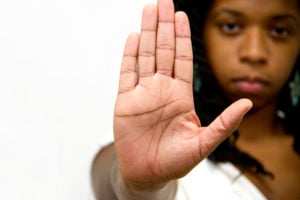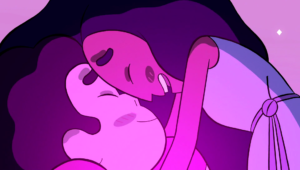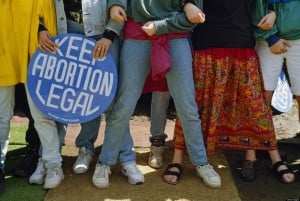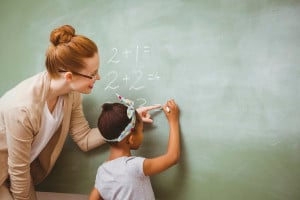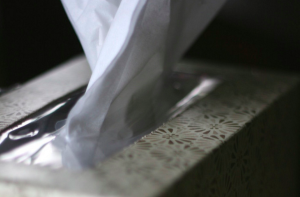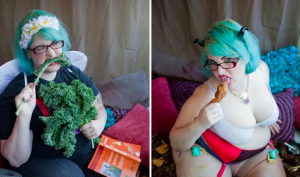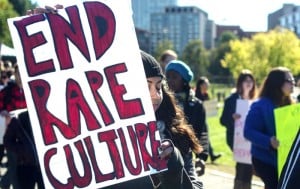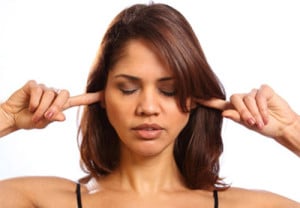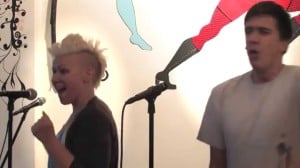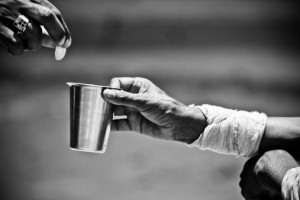
Source: Getty Images
American media has a history of ignoring the marginalized in our society.
Women, queer folk, people of color, and the elderly are all among the demographic groups that have been left out of our newspapers, magazines, and TV shows, rendering them nearly invisible, or at least inconsequential.
And although that’s slowly changing and these groups’ presences are becoming more prominent in the media and pop culture at large, due in large part to fierce activism, there’s still one group that’s often excluded altogether. And that’s America’s poor.
Now you may be thinking “But wait! I can think of an example! I can think of several!” And yes. Perhaps you can. But unfortunately, media representation isn’t enough; diverse and accurate media representation is essential.
And similar to the aforementioned groups, when classism and the plight of the poor are addressed in corporate media, the issues typically assume one of several (yawn, boring) roles – and it’s possible that you just never even noticed before.
And really, that’s what media literacy education is about. It’s about learning how to notice. It’s about being open and able enough to question what we see. And that’s what I want to help you do.
I want to help elucidate the problems so that you can be on the look-out from now on.
1. The Poor As Invisible
For the most part, the poor in America’s media are invisible.
And why? Because no one wants to see that or hear about it.
We’d much rather watch a show about rich, superficial housewives squabbling over trivial issues, or New Yorkers living in huge apartments that they somehow magically can afford, despite having jobs that pay moderate wages, or no jobs at all.
This escapism – and that’s really what “reality” TV is – takes us away from the realties of our daily, monotonous lives, and enables us to live temporarily in a world wherein our own problems don’t exist. And I get why that’s nice.
Don’t get me wrong. I enjoy a little escapism myself. That’s why I read as much as I do. But we need to infuse a little nonfiction with our fiction in order to keep ourselves grounded.
We need to see that there are people out there who struggle, and who deserve to have attention paid to their struggles.
We need to see this and hear about it, so that we can keep our humanity intact and maintain our ability to have empathy and compassion for others.
When we make an entire community invisible in media, what we’re implying is that they don’t exist – not in any meaningful way.
And that’s why under- and misrepresentation is so important.
2. The Poor As Statistics
When we hear about the poor on TV or read about them in the news, typically they’re described in the form of hard facts and poverty rates, rather than as human beings.
Take, for example, this excerpt from an article on RT.com:
In 2011, 46.2 million people in the US were living in poverty and the nation’s official poverty rate was 15 percent, up from 14.3 percent in 2009, according to the US Census Bureau. That figure appears to be the highest number seen in the 52 years for which poverty estimates have been recorded.
Pretty dry, huh?
Now, I know journalists have a job to present the information in the most accurate and factual way possible, but only including facts and numbers has a dehumanizing effect on the people that make up these statistics.
Also, these statistics prove that the percentage of people in the real world who live in poverty does not reflect what is portrayed on TV: 15% versus less than 1%, respectively.
If we can change these numbers to reflect reality more accurately, and those who are living in poverty can see themselves represented in accurate ways on television or in the news, they can reclaim their collective voices and understand that they matter.
3. The Poor As Poor Due to Their Own Life Choices
When personal stories of the poor are discussed in the media, often they are shown without the social or institutional context to back them up.
For example, shows or news stories may show people living in rough neighborhoods, using their EBT cards, and barely scraping by, but won’t mention the outside factors that have contributed to their situations.
Being the third generation in a family trapped in the poverty cycle, having a history of mental illness, or reeling from a sick family member’s medical costs that put them over the edge financially are all very real, concrete issue that affect people and their lives.
And yet we’re not talking about it.
Without the social context to understand why the poor live the way they do, we assume that they live that way because they choose to.
Or that even if they didn’t, if they just pulled themselves up by their bootstraps, they could find a decent job, get an education, and escape poverty once and for all – as if it’s that easy.
This type of thinking is dangerous, and it ignores the external factors that contribute to a person’s financial situation.
This myth sells the idea that those who dream and work hard will always achieve – and it comes from a place of racial, economic, and educational privilege.
Those who have the means to “choose” to live successful lives are (usually) the ones who have been given the resources to do so — resources, money, and access to education.
To assume that everyone has equal access to these resources is inaccurate and unrealistic.
4. The Poor As Temporarily “Down on Their Luck”
Since the recent recession, the trend in television has leaned toward showcasing Americans’ frugality, with shows like Extreme Couponing sending the message that, regardless of the economy or your current financial situation, if you’re obsessively diligent about clipping coupons and pinching pennies, you can maintain your middle-class status (or claw your way back there, as the case may be).
Take WeTv’s show Downsized as an example. Its entire premise is that a large, blended, previously upper-class family loses everything during the recession and then has to resort to cleaning houses (the shame!) and Dumpster-diving to make ends meet.
America loves shows like these because we see how “people like us” are also struggling, and we can relate to them.
The problem, however, is that television tends to focus on the working-to-middle class recently poor and ignore the poor and homeless altogether.
It’s time for some shows that follow the lives of people living with poverty and homelessness, so that we can see how they live and understand that just pulling themselves up by their bootstraps and pinching pennies isn’t always enough – and that that’s no fault of their own.
***
By only seeing America’s poor portrayed as invisible, as numbers, as always solely responsible for their own plight – regardless of what life’s thrown at them – we diminish their worth as humans.
We reinforce the idea that to be a true American is to be as rich and successful as possible — or at the very least, to be middle-class.
And we reinforce the notion that our net worth is equivalent to our worth as humans and our earning ability and economic status is our only inherent value —that capitalism equals contentment.
We need to repopulate the airwaves with shows like Cheers and Roseanne. Yes, they were comedies, but they were comedies that portrayed realistic lives of the working poor, and weren’t just created for our bemusement and mockery of “white trash” a lá Here Comes Honey Boo-Boo or Swamp People.
Then maybe one day, we can turn on our TVs and laptops and see realistic portrayals of America’s poor, instead of them being satirized on South Park.
[do_widget id=”text-101″]
Shannon Ridgway is from the great flyover state of South Dakota (the one with the monument of presidential heads). In her free time, Shannon enjoys reading, writing, jamming out to ’80s music and Zumba, and she will go to great lengths to find the perfect enchilada. Follow her on Twitter @sridgway1980.
Search our 3000+ articles!
Read our articles about:
Our online racial justice training
Used by hundreds of universities, non-profits, and businesses.
Click to learn more
Most Read Articles
- « Previous
- 1
- …
- 30
- 31
- 32





